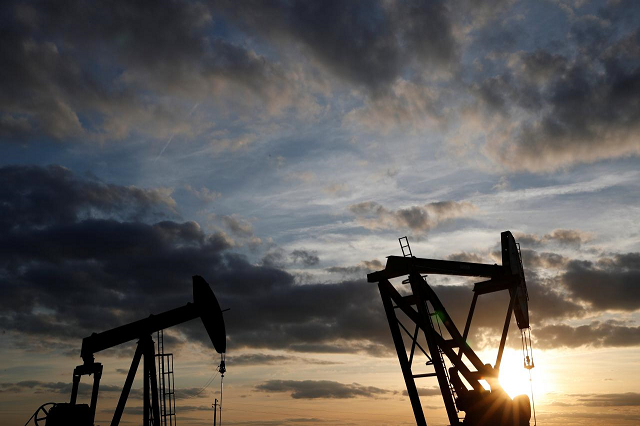Oil price jumps to highest since 2014 after US quits Iran deal
Iran re-emerged as a major oil exporter in 2016 after international sanctions against it were lifted

Sanctions likely to be re-imposed on Iran, will ultimately affect Iran’s oil exports
PHOTO: REUTERS
Rouhani says Iran will remain in nuclear deal without US
Ignoring pleas by allies, Trump on Tuesday pulled out of an international agreement with Iran that was agreed in late 2015, raising the risk of conflict in the Middle East and casting uncertainty over global oil supplies at a time when the crude market is already tight.
Brent crude oil touched its highest since November 2014 at $77.20 a barrel. The benchmark contract was up $2.15 a barrel, or more than 2.8 per cent, at $77.00 by 0730 GMT.
U.S. light crude was up $1.90 a barrel, or almost 2.8 per cent, at $70.96, near highs also last seen in late 2014.
In China, the biggest single buyer of Iranian oil, Shanghai crude futures hit their strongest in dollar terms since they were launched in late May.
Trump pulls US from Iran nuclear deal, to revive sanctions
“Iran’s exports of oil to Asia and Europe will almost certainly decline later this year and into 2019 as some nations seek alternatives in order to avoid trouble with Washington and as sanctions start to bite,” said Sukrit Vijayakar, director of energy consultancy Trifecta.
Iran re-emerged as a major oil exporter in 2016 after international sanctions against it were lifted in return for curbs on its nuclear program, with its April exports standing above 2.6 million barrels per day (bpd).
That made Iran the third-biggest exporter of crude within the Organization of the Petroleum Exporting Countries, behind Saudi Arabia and Iraq.
Walking away from the deal means that the United States will likely re-impose sanctions against Iran after 180 days, unless some other agreement is reached before then.
Europe, Iran pledge to uphold pact without United States
ALTERNATIVE SUPPLIES
Analysts’ estimates of the possible reduction in Iranian crude supplies as a result of any new U.S. sanctions range from as little as 200,000 bpd to as much as 1 million bpd, with most impact from 2019 as sanctions take time to impose.
Several refiners in Asia said on Wednesday they were seeking alternatives to Iranian supplies.
“The oil supply/demand balance is roughly in balance now, but it could turn to a complete supply shortage (in case of new supply curbs). Oil prices could rise at least $10, with Brent approaching near $90,” said Tomomichi Akuta, senior economist at Mitsubishi UFJ Research and Consulting.
All key crude oil futures contracts saw traded volumes jump as investors took new positions and refiners hedged to protect themselves from higher feedstock prices.
Moving to ease market concerns, Saudi Arabia on Wednesday said it would work with other producers to lessen the impact of any shortage in oil supplies. The country has been leading efforts since 2017 to withhold production to prop up prices.


















COMMENTS
Comments are moderated and generally will be posted if they are on-topic and not abusive.
For more information, please see our Comments FAQ